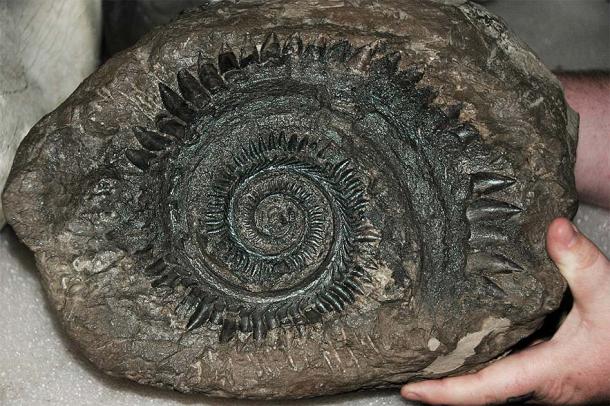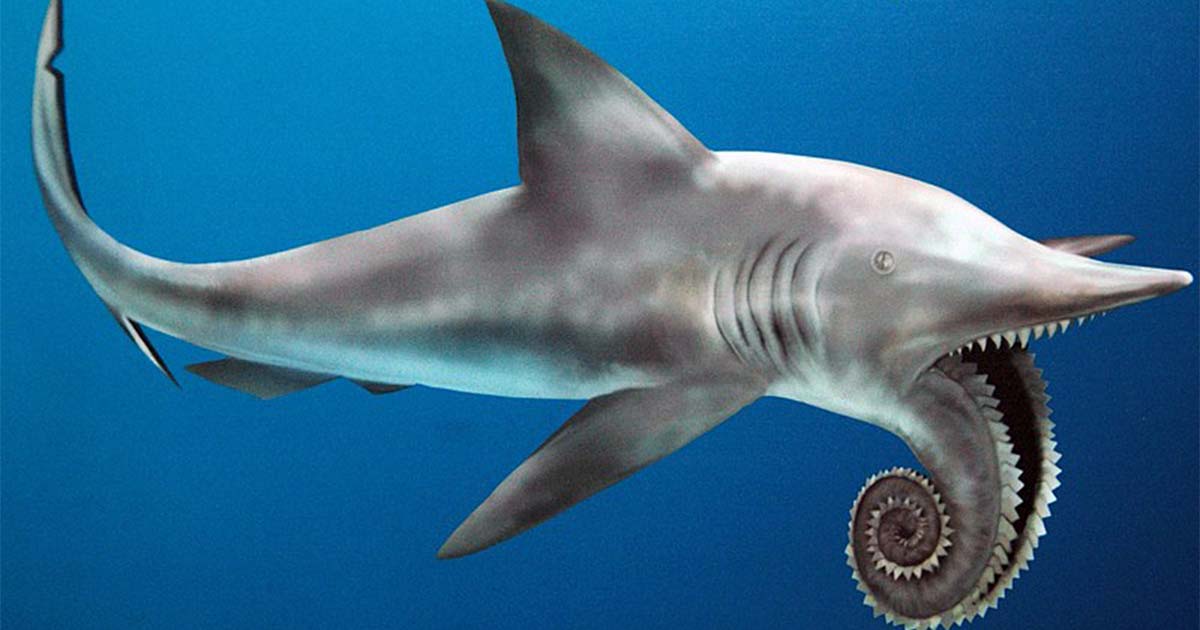When a Russian geologist discovered a strange fossil during excavations in the Ural Mountains back in 1899, little did he know that it was just the beginning of what would become an enduring mystery for paleontologists across the globe. For decades, experts tried to decipher not just what kind of creature this spiral-shaped tooth whorl, reminiscent of a chainsaw, had belonged to, but whereabouts on its body it had been located.
Having discovered the first fossil of its kind, Alexander Petrovich Karpinsky named it Helicoprion, meaning “spiral saw.” For on closer inspection he realized that it was actually the fossilized remains of a spiral created by shark-like teeth.
The problem with sharks is that their skeletons are made of cartilage rather than bone, which means that the only part of their body which gets fossilized is its teeth. The riddle for paleontologists, is trying to piece together what an ancient sea creature would have looked like based only on its fossilized fangs. This can explain why it took them so long to solve the mystery.

Fossil of a Helicoprion tooth whorl discovered in Idaho. (James St. John / CC BY 2.0 )
Karpinsky was close when he suggested that the Helicoprion tooth spiral was part of a shark’s mouth, but he originally assumed that it was part of an elephant-like spiraled snout. The American paleontologist Charles Rochester Eastman was skeptical, proposing in 1900 that it was part of the shark’s dorsal fin.
Over subsequent years, dozens of similar specimens were discovered in far flung locations across the globe. But without any corporal context, experts were forced to continue hypothesizing on the actual location and function of its unusual teeth.
This all changed in 2013, when researchers decided to CT scan a Helicoprion fossil found in Idaho in the 1950s and stored at the Idaho Museum of Natural History. This particular fossil included segments of what was once Helicoprion’s jaw and so they were finally able to understand how the swirl fit into the picture.
Measuring somewhere between four and seven meters long (13 to 23 feet), Helicoprion was actually a kind of cartilaginous eugeneodont fish and not a shark at all. In the middle of its mouth it possessed a remarkable spiral of teeth, which jutted out where you’d expect to see a tongue, much like a chainsaw. Experts now believe that for over 20 million years, Helicoprion’s dental structure was used to saw through its prey or even to remove the shells from hard-bodied cephalopods.
Top image: Until they discovered the true location of its tooth-swirl, there were several theories for how Helicoprion once looked. An outdated Helicoprion reconstruction. (public signage, Field Museum of Natural History, Chicago, Illinois, USA). James St. John / CC by SA 2.0.
